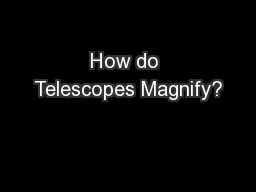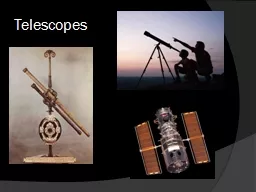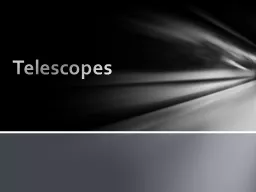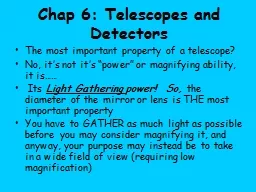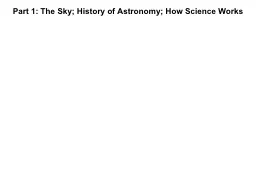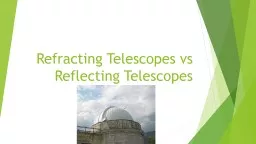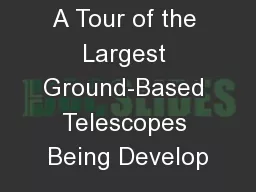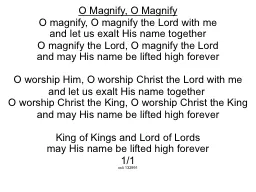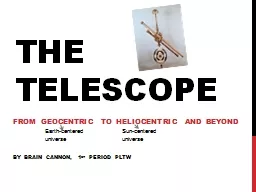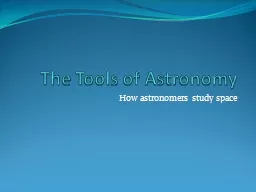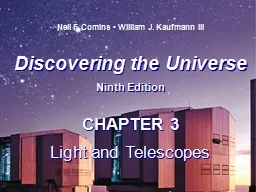PDF-How do Telescopes Magnify?
Author : phoebe-click | Published Date : 2017-02-06
41 150 Galileo146s first telescope consisted of two lenses attached to the inside of a tube The Objective had a focal length of 980 millimeters and the eye lens
Presentation Embed Code
Download Presentation
Download Presentation The PPT/PDF document "How do Telescopes Magnify?" is the property of its rightful owner. Permission is granted to download and print the materials on this website for personal, non-commercial use only, and to display it on your personal computer provided you do not modify the materials and that you retain all copyright notices contained in the materials. By downloading content from our website, you accept the terms of this agreement.
How do Telescopes Magnify?: Transcript
Download Rules Of Document
"How do Telescopes Magnify?"The content belongs to its owner. You may download and print it for personal use, without modification, and keep all copyright notices. By downloading, you agree to these terms.
Related Documents

